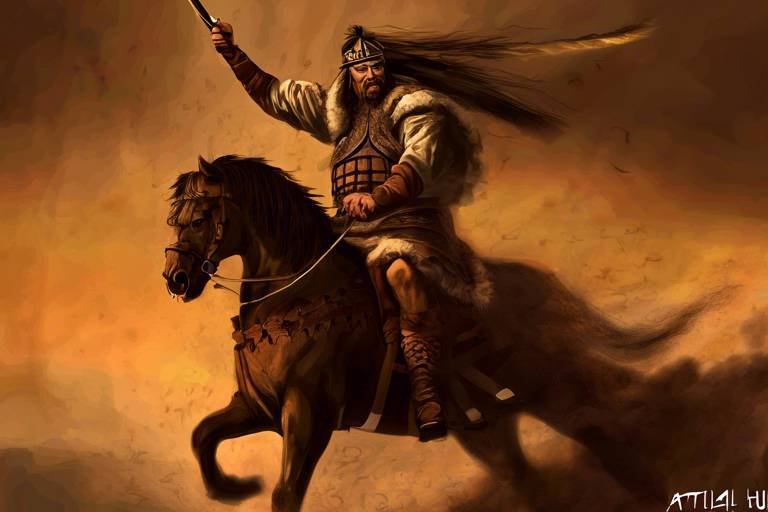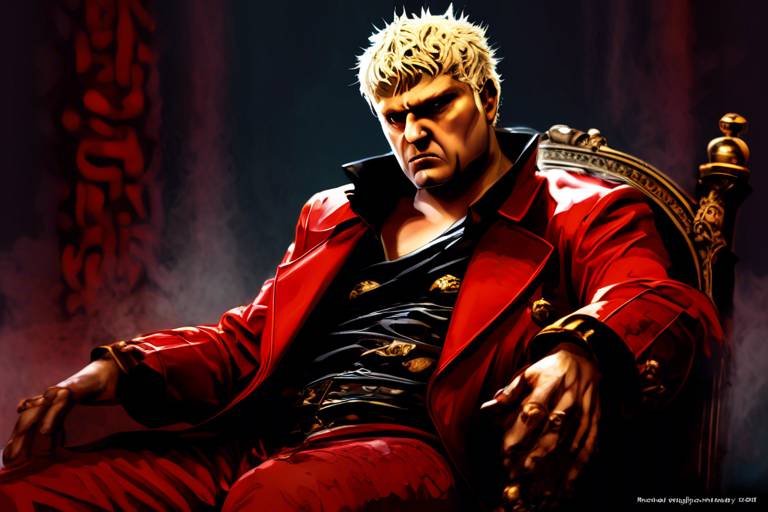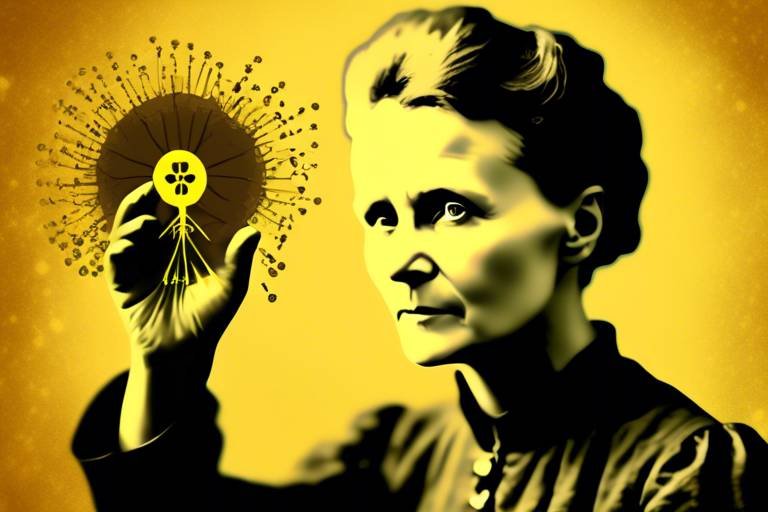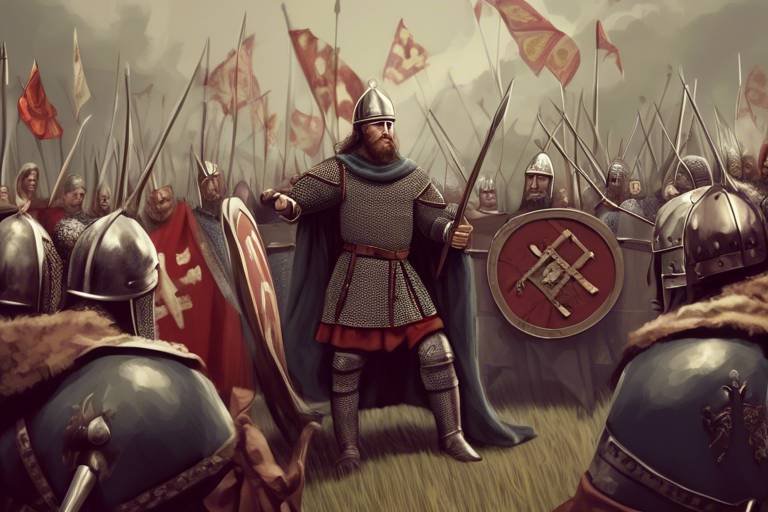Attila the Hun: The Fearsome Leader
Attila the Hun, a name that strikes fear into the hearts of many, was a formidable leader whose legacy continues to captivate historians and enthusiasts alike. Known for his ruthless efficiency and strategic brilliance, Attila rose to power as the leader of the Hunnic Empire, leaving a trail of conquests and destruction in his wake. His reign was marked by military campaigns that reshaped the map of Europe and instilled terror in those who dared to oppose him.
From his early life to his mysterious death, Attila's story is one of power, ambition, and relentless pursuit of dominance. His leadership style, characterized by a potent blend of charisma and fear, allowed him to command loyalty from his followers while striking fear into the hearts of his enemies. Attila's military campaigns and conquests are the stuff of legend, with his invasions of the Roman Empire standing out as some of the most audacious and successful in history.
Attila's relationships with allies and enemies were as complex as they were impactful. His alliances with Germanic tribes bolstered his forces, while his confrontations with the Eastern Roman Empire tested his mettle and strategic acumen. Despite facing formidable foes, Attila's military prowess and tactical genius ensured that his empire remained a dominant force in the region for years to come.
Religious beliefs and cultural influences played a significant role in shaping Attila's worldview and interactions with other civilizations. The role of shamanism in Hunnic society, coupled with Attila's own beliefs, added a mystical element to his rule and further solidified his image as a fearsome and enigmatic leader.
Attila's legacy extends far beyond his death, with historians and scholars continuing to debate his true character and impact on world history. His portrayal in historical accounts, literature, and popular culture has only served to enhance his mystique, ensuring that Attila the Hun remains a figure of fascination and intrigue to this day.
As we delve deeper into the life, conquests, and legacy of Attila the Hun, we uncover a story of power, ambition, and the enduring impact of one of history's most fearsome leaders. From his rise to power to his lasting legacy, Attila's story is one of conquest, intrigue, and the indelible mark he left on the annals of history.

Early Life and Rise to Power
Exploring the life, conquests, and legacy of Attila the Hun, one of history's most feared and powerful leaders who led the Hunnic Empire with ruthless efficiency and strategic brilliance.
Attila the Hun, born around 406 AD, was raised in the harsh and unforgiving environment of the Eurasian steppes. From a young age, he was exposed to the brutal realities of Hunnic life, learning to ride, hunt, and fight with exceptional skill. As he grew older, Attila's natural leadership qualities became evident, and he quickly rose through the ranks of the Hun hierarchy.
Following the death of his uncle, Rugila, Attila and his brother Bleda jointly assumed leadership of the Hun tribes. However, Attila soon emerged as the dominant figure, displaying a rare blend of charisma, cunning, and ruthlessness that set him apart from his peers. With a keen understanding of tribal politics and a fierce ambition to expand his influence, Attila embarked on a path that would lead him to become one of the most formidable conquerors in history.
One of the defining moments in Attila's rise to power was his successful negotiation of the Treaty of Margus with the Eastern Roman Empire in 435 AD. This treaty secured a lucrative annual tribute from the Romans to the Huns and allowed Attila to consolidate his authority over the Hun confederation. Through a combination of strategic alliances, military prowess, and shrewd diplomacy, Attila solidified his position as the undisputed ruler of the Huns and embarked on a relentless campaign of expansion and conquest.
As Attila's reputation for ferocity and tactical brilliance spread throughout the region, he attracted a growing number of warriors and followers eager to join his quest for power and glory. With an army of unmatched discipline and loyalty at his command, Attila set his sights on carving out a vast empire that would shake the foundations of the known world.
Thus, from his humble beginnings on the windswept plains of Central Asia, Attila the Hun emerged as a force to be reckoned with, a visionary leader whose insatiable thirst for conquest and dominion would leave an indelible mark on the annals of history.
- Who were Attila the Hun's main enemies?
- What was the impact of Attila's military campaigns on European history?
- How did Attila's death affect the stability of the Hunnic Empire?
- What role did shamanism play in Hunnic society during Attila's reign?

Military Campaigns and Conquests
Exploring the life, conquests, and legacy of Attila the Hun, one of history's most feared and powerful leaders who led the Hunnic Empire with ruthless efficiency and strategic brilliance.
Attila the Hun was a masterful military strategist whose campaigns and conquests reshaped the map of Europe during the 5th century. Known as the "Scourge of God," Attila led his fierce warriors on relentless campaigns that struck fear into the hearts of his enemies.
One of Attila's most notable military campaigns was his invasion of the Roman Empire. With a formidable cavalry force and a reputation for brutality, Attila swept through the Eastern Roman territories, plundering and pillaging as he went. His sack of Constantinople sent shockwaves throughout the empire and solidified his reputation as a fearsome conqueror.
Attila's conquests extended beyond the Roman Empire, as he also targeted the Germanic tribes and other neighboring kingdoms. His ability to unite diverse tribes under his rule and command their loyalty through fear and respect allowed him to amass a vast empire that stretched from the Black Sea to the Western Roman Empire.
One of Attila's most famous battles was the Battle of the Catalaunian Plains, where he clashed with a coalition of Roman and Visigothic forces led by General Flavius Aetius. The battle was a brutal and bloody affair, with neither side emerging as a clear victor. However, it showcased Attila's military prowess and his ability to command his troops in the face of overwhelming odds.
Attila's military campaigns and conquests left a lasting impact on European history, shaping the geopolitical landscape for centuries to come. His legacy as a formidable warrior and ruthless conqueror continues to fascinate historians and enthusiasts alike.
Q: Was Attila the Hun a real historical figure?
A: Yes, Attila the Hun was a real historical figure who ruled the Hunnic Empire during the 5th century.
Q: What was Attila the Hun's leadership style?
A: Attila the Hun was known for his authoritarian leadership style, commanding loyalty and fear from his subjects and allies.
Q: What was the impact of Attila the Hun's conquests on European history?
A: Attila the Hun's conquests reshaped the map of Europe and influenced the rise and fall of empires in the region.
Q: How did Attila the Hun die?
A: The exact circumstances of Attila the Hun's death remain shrouded in mystery, with conflicting accounts of assassination or natural causes.

Leadership Style and Tactics
Attila the Hun's leadership style and tactics were characterized by a unique blend of fear, charisma, and strategic acumen. Known as the "Scourge of God," Attila ruled with an iron fist, instilling both awe and terror in his subjects and enemies alike. His leadership was centralized around a cult of personality, where his word was law and disobedience meant swift and severe punishment. Attila's ability to inspire loyalty among his followers through a combination of rewards and fear tactics ensured a tight grip on his vast empire.
One of Attila's key tactics was his mastery of psychological warfare. He understood the power of intimidation and used it to his advantage, often employing brutal tactics to strike fear into the hearts of his adversaries. By cultivating a reputation as a ruthless and unstoppable warrior, Attila was able to subdue opposition without engaging in prolonged conflicts. His swift and decisive military campaigns were designed to overwhelm and demoralize his enemies, leading to quick victories and minimal casualties on his side.
Moreover, Attila was a master strategist, adept at exploiting the weaknesses of his foes and capitalizing on opportunities for expansion. He employed a combination of cavalry tactics, siege warfare, and diplomatic maneuvering to achieve his ambitious military goals. Attila's ability to adapt to different battlefield conditions and outmaneuver his opponents made him a formidable adversary, capable of outwitting even the most seasoned commanders.
Despite his brutal reputation, Attila also displayed a shrewd diplomatic sense, forging alliances with various tribes and kingdoms to strengthen his position and expand his influence. By playing rival factions against each other and leveraging political divisions to his advantage, Attila was able to maintain a delicate balance of power within his empire. His ability to navigate complex geopolitical landscapes and forge strategic partnerships contributed to his long-lasting legacy as a formidable leader.

Legacy and Historical Impact
Exploring the life, conquests, and legacy of Attila the Hun, one of history's most feared and powerful leaders who led the Hunnic Empire with ruthless efficiency and strategic brilliance.
Attila the Hun left an indelible mark on history through his military prowess and ruthless conquests. His legacy reverberates through the annals of time, influencing warfare, diplomacy, and the perception of barbarian rulers.
One of Attila's most significant historical impacts was his ability to instill fear and awe in both his allies and enemies. His reputation as the "Scourge of God" struck terror into the hearts of those who dared to oppose him, shaping the way future leaders approached conflict and diplomacy.
Furthermore, Attila's conquests reshaped the political landscape of Europe, leaving a trail of destruction and subjugation in his wake. The Hunnic Empire's expansion under his command altered the course of history, challenging the established powers of the time and asserting the dominance of the Huns.
Despite his brutal tactics and merciless campaigns, Attila's legacy also includes a certain mystique and admiration for his strategic brilliance. His ability to unite diverse tribes under his rule and command unwavering loyalty from his followers showcased his leadership acumen and tactical acuity.
Moreover, Attila's historical impact extends beyond his military achievements to his role in shaping the perception of barbarian rulers in Western civilization. He personified the image of the ruthless conqueror, forever etching his name in the annals of history as a symbol of power and dominance.
In conclusion, Attila the Hun's legacy and historical impact are undeniable, leaving a lasting imprint on the tapestry of human history and serving as a testament to the enduring legacy of one of the most fearsome leaders the world has ever known.

Relationships with Allies and Enemies
Exploring the life, conquests, and legacy of Attila the Hun, one of history's most feared and powerful leaders who led the Hunnic Empire with ruthless efficiency and strategic brilliance.
Attila the Hun's relationships with allies and enemies were complex and pivotal in shaping his empire's fate. Despite his reputation as a fierce warrior, Attila understood the importance of alliances in maintaining his power. He forged strategic partnerships with various Germanic tribes, such as the Ostrogoths and Gepids, leveraging their military strength to bolster his own forces and expand his influence across Europe.
However, Attila's alliances were often fragile, marked by shifting loyalties and conflicting interests among his allies. The Hunnic leader skillfully navigated these intricate relationships, using a mix of diplomacy, intimidation, and military might to keep his allies in check and prevent potential betrayals.
On the other hand, Attila's dealings with his enemies, particularly the Eastern Roman Empire, were characterized by relentless conflict and fierce opposition. The Hunnic raids into Roman territories, including the sacking of cities like Constantinople and Philippopolis, fueled animosity and deep-seated enmity between Attila and the Roman rulers.
Despite facing formidable foes like the Roman Emperor Theodosius II and the general Flavius Aetius, Attila's military prowess and cunning tactics allowed him to hold his own and even emerge victorious in several confrontations. His ability to strike fear into the hearts of his enemies and rally his troops for decisive battles solidified his reputation as a formidable adversary on the battlefield.
Overall, Attila the Hun's relationships with allies and enemies were a delicate balancing act of power dynamics, alliances, and rivalries that ultimately shaped the course of his empire's history and his legacy as a fearsome leader in the annals of warfare.

Religious Beliefs and Cultural Influence
Attila the Hun's religious beliefs played a significant role in shaping his cultural influence and interactions with other civilizations. As a leader of the Hunnic Empire, Attila followed a form of shamanism, a spiritual practice that involved connecting with the spirit world through rituals and ceremonies. Shamanism was deeply rooted in the Hunnic society, influencing not only Attila's personal beliefs but also the decisions he made as a ruler.
Shamanism provided Attila with a sense of spiritual guidance and power, enhancing his authority and influence over his people. The Hunnic warriors believed in the protection and blessings of their shamanistic practices, instilling fear in their enemies and strengthening their unity on the battlefield. Attila's adherence to shamanism also influenced his diplomatic relations, as he incorporated spiritual elements into negotiations and alliances with other tribes and empires.
Attila's cultural background as a Hunnic leader further shaped his worldview and interactions with different societies. The nomadic lifestyle of the Huns, characterized by mobility and adaptability, influenced Attila's military strategies and conquests. The Hunnic emphasis on horseback riding and archery made them formidable warriors, enabling Attila to launch swift and devastating attacks on his enemies.
Additionally, Attila's cultural influence extended beyond warfare, as he also engaged in trade and diplomacy with various civilizations. His ability to navigate different cultural landscapes and languages allowed him to form alliances and extract tribute from both Eastern and Western powers. Attila's cultural adaptability and strategic acumen enabled him to expand his empire and leave a lasting impact on the regions he conquered.

Death and Succession
Detailing the mysterious circumstances surrounding Attila's death, the power struggles that ensued within the Hunnic Empire, and the eventual decline of his once-mighty realm.

Historiography and Popular Perception
Historiography and Popular Perception offer a fascinating glimpse into how Attila the Hun has been depicted throughout history and in popular culture. The portrayal of Attila in historical accounts has varied widely, with some painting him as a brutal and merciless conqueror, while others emphasize his strategic prowess and leadership skills. This diversity of perspectives has contributed to ongoing debates about the true nature of Attila's character and his impact on the world.
In literature, Attila is often portrayed as a symbol of barbarism and destruction, representing the fearsome power of the Huns. His military campaigns and conquests have been romanticized in epic tales and chronicles, highlighting his larger-than-life persona and the awe he inspired in both allies and enemies. These narratives have helped shape the popular perception of Attila as a formidable and enigmatic figure in history.
Popular culture has further perpetuated the mystique surrounding Attila the Hun, with films, TV shows, and books often portraying him as a ruthless and merciless warlord. These depictions, while entertaining, sometimes oversimplify the complexities of Attila's reign and his interactions with other civilizations. Despite this, Attila's legacy continues to capture the imagination of audiences around the world, showcasing the enduring fascination with this legendary leader.
Frequently Asked Questions
- Who was Attila the Hun?
Attila the Hun was a powerful and feared leader of the Hunnic Empire during the 5th century. Known for his military prowess and strategic brilliance, Attila led his armies on extensive conquests, striking fear into the hearts of his enemies.
- What were Attila's major military campaigns?
Attila the Hun undertook several major military campaigns, including invasions of the Eastern Roman Empire, Gaul, and Italy. His most notable campaign was the invasion of the Roman Empire in 451 AD, culminating in the Battle of the Catalaunian Plains.
- How did Attila the Hun die?
The exact circumstances of Attila's death remain shrouded in mystery. According to historical accounts, he passed away in 453 AD under unclear circumstances, possibly due to a severe nosebleed after heavy drinking at a feast.
- What was Attila's legacy?
Attila the Hun left a lasting legacy on warfare, diplomacy, and the perception of barbarian rulers in history. His impact on European history and subsequent leaders, as well as his portrayal in popular culture, continues to spark fascination and debate.



















